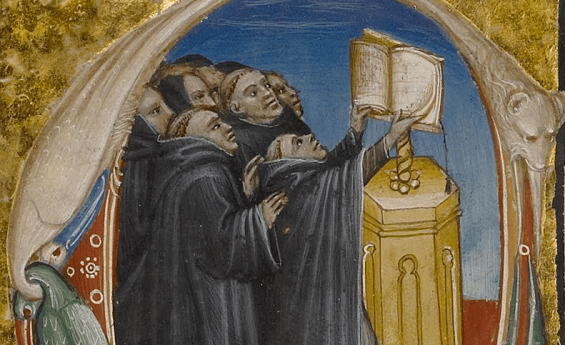During the Middle Ages, Western Europe made a few attempts to understand Islam and Muslims. But most of these interpretations were negative. The understanding of Islam and its reputation in Europe resulted in creating a feeling of uncertainty, precariousness and sometimes hostility.
One of the big names of Mediaeval Europe who tried to study Islam is Peter the Venerable, a French abbot from Cluny. He is renowned for his contribution to the reappraisal of the Church’s relations with Islam, but the image he painted of the religion was quite dark.
Peter the Venerable’s Islam interpretation helped with «the lack of information about the mysterious and mystical East». But it was also initiated «to dismantle it, and not to (really) understand it».
In his book «History of the Apocalypse» (Lulu Press, 2015), Catalan Negru wrote that these intentions resulted in explaining similarities between the two religions (Islam and Christianity) in the «worst light possible».
Peter the Venerable's summary of Islam
This trend was easily read in Peter the Venerable’s book about Islam «Summa totius haeresis Saracenorum» (A Summary of the Entire Heresy of the Saracens) that he wrote in the 12th century, to «enlighten» Christians about the Eastern religion.

His book or summary was compiled after he «managed to obtain a translation of the Quran in Latin and a collection of information about Muhammad (Prophet Mohammed)», wrote Negru. Peter the Venerable’s research was mainly encouraged by the urge of helping «Christian scholars doctrinairely refute the Islamic teachings», the same book recalled.
This cast of mind pushed the abbot to demonize prophet «Muhammad», the messenger of Islam. Explaining the main ideas conveyed by Peter the Venerable’s book, Negru wrote that for Cluny’s ninth abbot the prophet «was not the Antichrist, but the successor of the heretic Arius of Alexandria and the precursor of the Antichrist».
Ridiculing Islam and Islamizing Christian heresies
In other words, the French abbot saw prophet Mohammed as «another heresy», ridiculing Islam and its teachings. This was explained by Christine Caldwell Ames in her book «Medieval Heresies» (Cambridge University Press, 2015) as an obvious anti-Muslims reaction.
«It is clear from Peter’s several anti-Jewish and anti-Muslim treaties that the purpose of better knowing Islam was better to attack it».
Indeed, in his summary of the religion, Peter «referred to Islam as a heresy», Ames explained. Nevertheless, the writer added that he «hereticized» the Muslim account on «the Christian monk Bahira, who encountered the child Muhammad and recognized him as a prophet» and «Islamized» Christian heresies.
Moreover, Peter’s book, which was expected to bring additional information on Islam to the West, turned the prophet into a «veritable dark legend», portraying him as a «heretic, false prophet, renegade cardinal» and a «founder of violent religion».
In an article on weekly British magazine The Spectator, Tom Holland wrote that the «earliest European caricature of Muhammad served to illustrate», Peter the Venerable book on Islam.
To Holland the caricature that accompanied Peter’s work and the dark image he gave of prophet Muhammad was «heir to an even older tradition». He explained, citing a book by John Tolan «Faces of Muhammad: Western Perceptions of the Prophet of Islam from the Middle» (Princeton), that «condemnation of Islam as a heresy did at least derive from a recognition on the part of Latin Christians that it was not an entirely alien faith: that it honored the biblical prophets; that it laid claim to a divine law; that it was monotheistic».





 chargement...
chargement...













